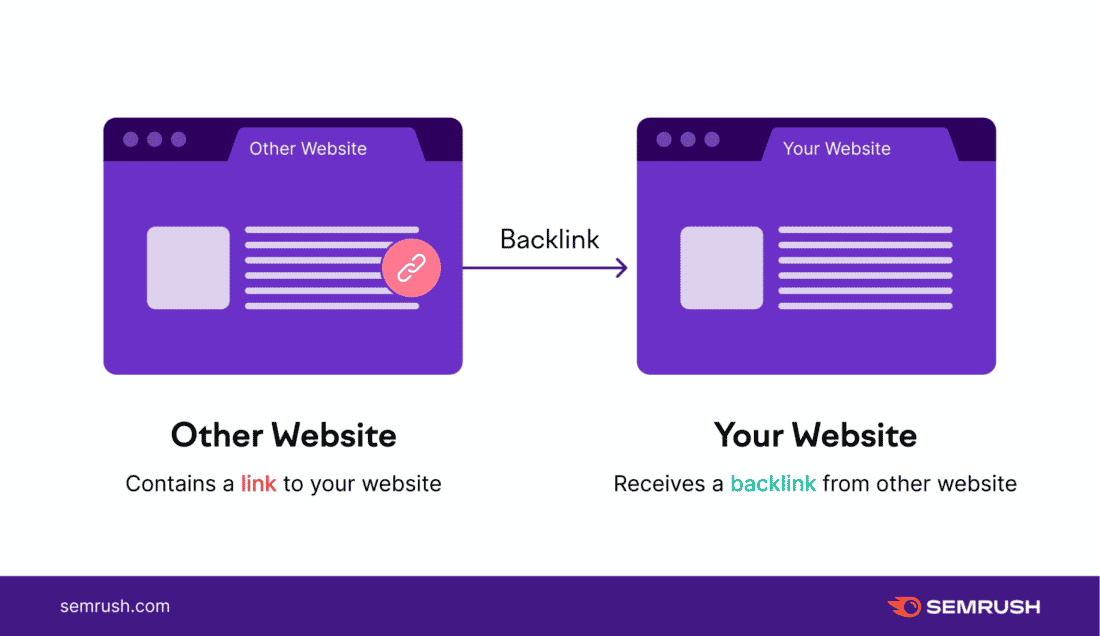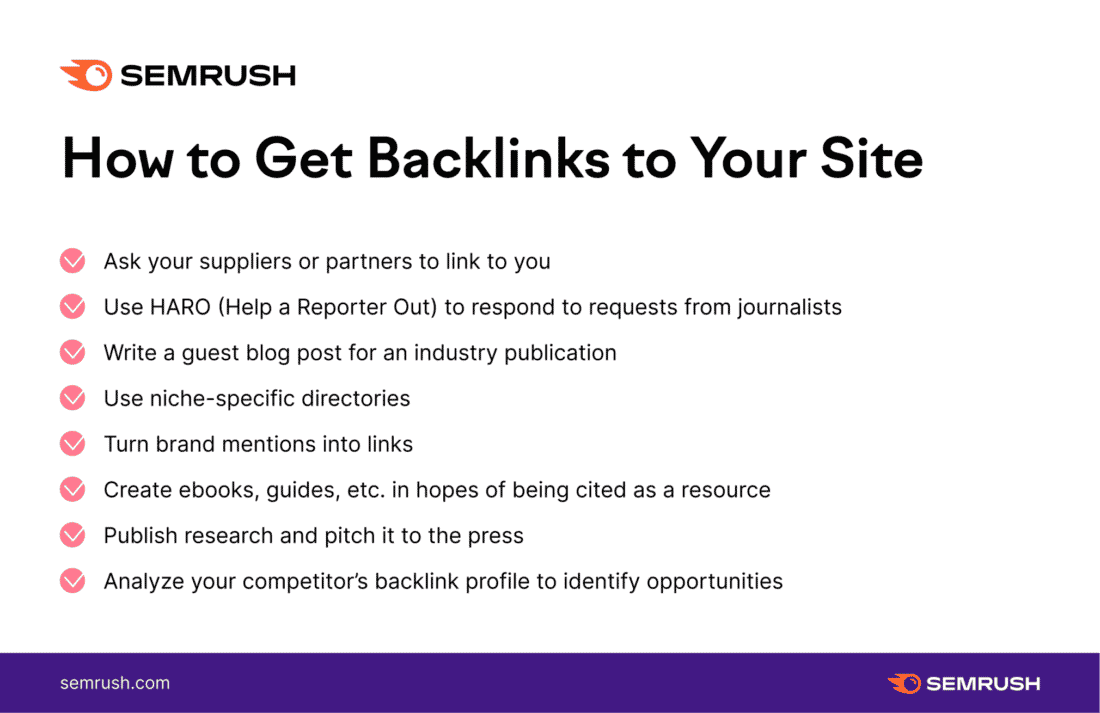When putting together a Search Engine Optimization (SEO) strategy, it is important to consider several factors like keywords, on-page v. off-page, and competitor research. One strategy that SEO specialists use when building an off-page strategy involves backlinks. Backlinking is when another website links to a page on your website. These are also called inbound links, which are key to backlink analysis.

Looking holistically at investing resources into SEO, backlinks are part of a strategy to build community as well as subject matter authority. Google validates a site’s authority by counting how many websites point back to your site. Pages with more backlinks can rank higher on Search Engine Results Pages (SERPs).
A backlink analysis is something every website needs to conduct on a regular basis. Semrush, the content marketing SaaS platform, found at least one backlink for 99.5% of all analyzed URLs. This means other websites are talking about you and/or using your content on their website. Understanding what others find interesting and informative about your website (such as content and/or products) is a great way to understand consumer and marketplace behaviors.
Getting More Backlinks
Building up backlinks is part of any solid outbound SEO strategy. According to Semrush research, out of 10K selected domains, 33% had fewer than 1,000 backlinks; 34% had between 1,000 and 100,000 backlinks; and 33% had more than 100,000 backlinks.
According to Google’s Webmaster Guidelines, the most effective way of acquiring relevant backlinks from reputable sites is through creative and unique content. The guidelines refer to these links as “editorial votes given by choice” from the larger community.
Here are the different types of backlinks:
- Nofollow: Code injected into a link that means a website doesn’t vouch for the source
- Follow: Link to another website
- Sponsored or paid: Money exchanged for a link
- UGC (user generated content): Link in a blog comment or forum not posted by the website’s owner

Not all backlinks are created equal. Search engines can judge your backlink quality and promote or demote your search ranking accordingly. This is part of analyzing your backlinks and making sure all inbound links are of the caliber you want for your website.
What is a high-quality backlink?
- Trusted source: Quality website with an excellent reputation
- Google PageRank: Way of measuring the importance of website pages
- Popularity: Websites with lots of (quality) backlinks for higher rankings
- Industry mentions: Respected industry-specific websites that mention your website
What is a bad (or toxic) backlink?
- Toxic: A manipulative link placed on a website whose sole purpose is to increase SEO (see link schemes from Google)
- Old and/or outdated backlinks
- Coming from obsolete websites
- Spammy websites
- Obscure link placement
Tracking & Analyzing Backlinks
There are many tools available to track backlinks, including a simple Google search. Utilizing your Google Search Console for an initial backlink check can help you see high-level metrics, such as your total links and referring domains. Although a search engine might be the first place you look for who is mentioning your website, it’s not the only way to conduct an analysis as it does not provide a full competitive landscape.
Here is a list of the top backlink analysis tools:
- Semrush: Fresh index
- Ahrefs: Live Links
- Moz: Moz’s link index
- Majestic: Fresh index

When you are conducting a backlink analysis, here are the things you want to include:
- Catalog of all backlinks
- Interpretation of backlink types and domains
- Analysis of backlink quality
- Removal strategy of toxic backlinks
- Tracking your backlink content
- Schedule to update and monitor backlinks
When looking to analyze your backlinks, it is important to include your competitors as well. This will give you perspective on the competitive landscape and where your growth lies.
Building links is a crucial component of SEO. In fact, it’s one of the key elements search engines consider when deciding where to rank you. Creating a backlink analysis as well as a new link-building plan can elevate your content strategy and ultimately your SERP.



0 Comments